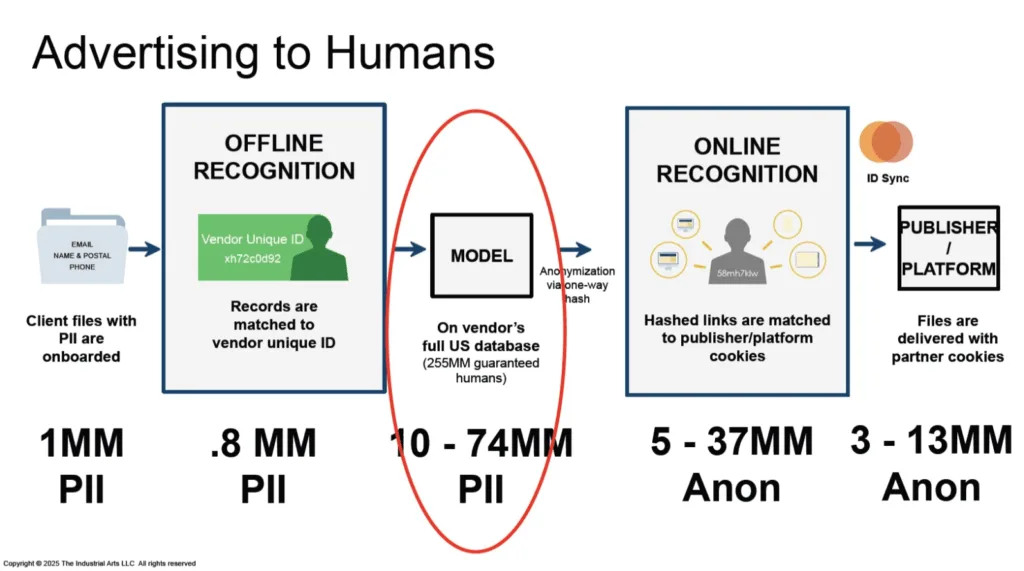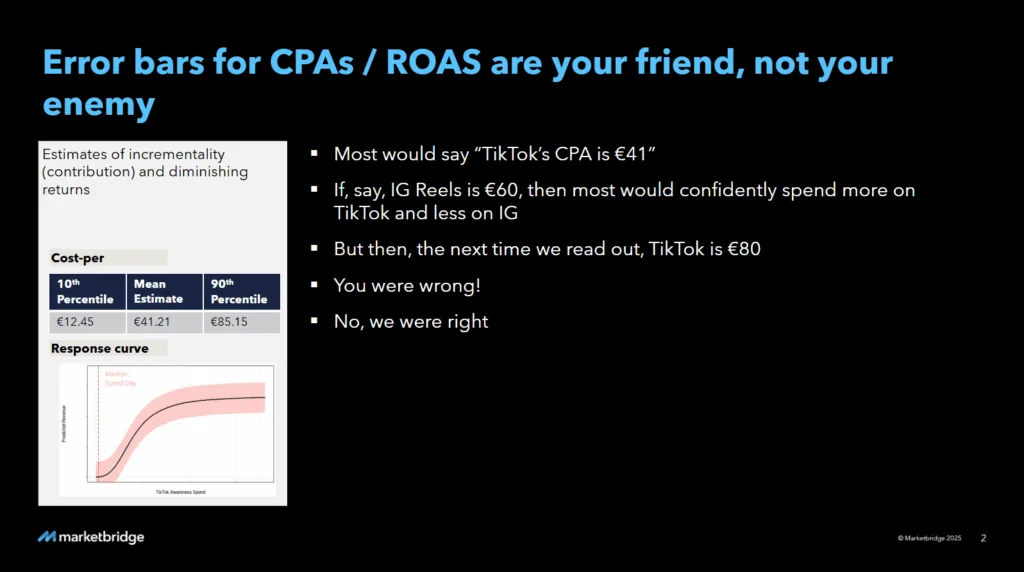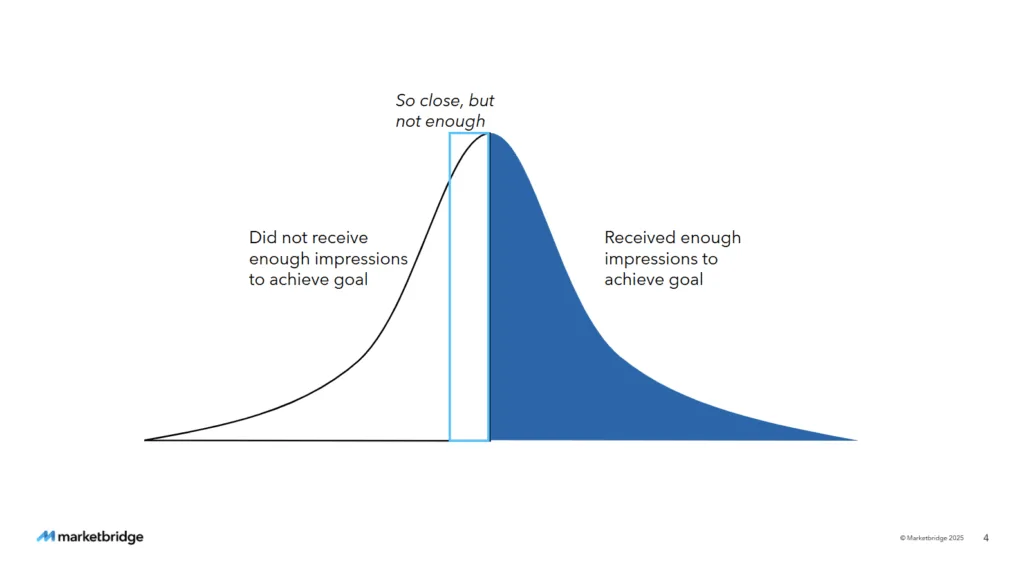Key takeaways from reclaiming quality in go-to-market: Imperatives for marketing and measurement one-day conference
Quality can differentiate brands, drive loyalty and increase revenue. We’ve been talking about this for a while on LinkedIn, on our blog, and at events.
Last week we co-hosted with the Association of National Advertisers a one-day conference that gathered marketing leaders and practitioners to discuss why quality matters and how to move toward quality marketing and analytics. Below are 5 key takeaways for marketing leaders to evaluate and discuss internally.
Build audiences offline to better control who you’re targeting
“One of our biggest dangers is thinking about people as datasets,” said Chief Analytics Officer Andy Hasselwander during his quality marketing analytics session, but multiple sessions discussed why thinking about your target audience as big numbers (and not individuals) is a problem.
Multiple sources say 252,000 websites are created daily, and the number of viewable impressions and IP addresses vastly outnumber human beings on earth. According to Truth{set}, any two given data providers agree on what IP address matches a postal address at most only 14% of the time. Privacy is not an excuse for bad data, but marketers are getting duped thinking they’re targeting one person but reaching another. Marketing needs to start policing itself on quality—potentially by bringing the identity spine into the open rather than relying on blackbox, outsourced providers.
If you want better results, leverage data and PII to build offline audiences and “stay in the PII as long as possible,” according to Mark Pilipczuk from The Industrial Arts. Segment your ICP within your own PII data, and leverage a vendor’s database to build lookalike models for your target audience, hashed audience is uploaded to the publisher or ad platform (audiences drops due to match rates), and then the files are delivered with partner cookies.

Image credit: Mark Pilipczuk / The Industrial Arts LLC, © 2025 — used with permission.
This offline, more targeted audience almost certainly will outperform the third-party interest and intent categories available in DSPs and ad platforms for customer lifetime value (CLV) and return on ad spend (ROAS).
One lever advertisers can pull to improve impression quality is to ask their DSPs and ad platforms to provide data on refresh rates (higher is worse), sites with multiple advertisers in the same consumer view, and sites with high ad-to-content ratios.
Marketing and analytics should embrace uncertainty
Understanding what we know and what’s still uncertain supports good decision making. Yet many in both marketing and analytics are hesitant to state when we don’t have a definitive answer.
In statistics and modeling, error bars show the variability of data. When MMM reports out a cost per acquisition (CPA) or ROAS, typically only the mean or median value is reported. But that’s where you get into trouble.
In the image below, the estimate for TikTok’s CPA is €41. If Instagram Reels’ estimate CPA is €60, the marketing team may decide to shift budget to TikTok. But then in the next readout (and with more data), TikTok’s CPA is €80. Now marketing’s mad and doesn’t trust the MMM. But in reality, TikTok’s CPA is still within the confidence interval—error bars would’ve helped marketing make a more informed decision.

Analytics teams must help educate their stakeholders about error bars and confidence intervals so the organization can make better decisions.
Delivering ROAS or CPA without error bars doesn’t breed confidence, it breeds distrust.
Cultivate curiosity and come with a solution mindset
Humans are wired to collect data, but creating knowledge, driving insight and providing wisdom don’t happen automatically. So what makes a great analyst? Curiosity, clarity and capability are the core skills of a great analyst, according to Sravanthi Konduri from Navy Federal Credit Union. Often we equate degrees with skill, but building experience and knowledge is needed to drive insight (and eventually wisdom).
Cultivating curiosity within the organization is another matter. Organizations with a growth mindset support an analytical environment and aren’t scared of data and learning. Analytics teams can fail because of analysis paralysis and wanting to have the perfect answer, rather than collaborating with internal stakeholders.
A solution mindset is key for marketing analytics teams to partner internally and offer alternative approaches and solutions. Analysts should think like the GM of a business unit—understand the problems, where the question fits in and who would care, and delivering an answer in the context of why it matters.
How to combat too high and too low ad frequency
Often marketers worry about capping frequency for individual views to prevent waste. This has long been an issue, especially if you’re running a campaign across multiple channels and platforms. David Riva from The Trade Desk pushes for unified frequency control—rather than capping each individual placement, DSPs should support capping frequency across channels.
Another area of waste, according to Ray Van Iterson from the United States Postal Service, is the large group of people who see 1, 2 or 3 fewer impressions than needed to achieve the goal.

And the key question is: do you even know who those people are? Can you identify and target them differently or with additional inventory?
Understanding consumer journeys is essential and MTA isn’t dead
The announcement of cookie deprecation was overblown and yet many organizations stopped trying to understand individual consumer journeys. But reporting focused on campaigns, channels or business units is inherently biased.
Marketers should know what combinations of channels and which sequences lead to the best outcomes. This can be done for known, trackable touches as well as likely touches using probabilistic mapping. Adding up the small probability of seeing an ad on a given day in a specific DMA across an entire campaign can give a better picture of how channels work together.

That individual journey data also can identify if someone is less engaged than we expect. Marketers can then deploy a higher impact channel to achieve the goal.
Understanding the consumer journey at the most granular level of data possible arms marketers with an understanding of the impact of particular platforms or partners within a channel. Identifying the high engagement or high attention platforms and partners can provide optimization opportunities and drive better outcomes.
Want more insights?
If focusing on quality in marketing and analytics feels like a challenge, let’s talk. We’d love to hear about the roadblocks, share best practices and brainstorm solutions.
Complete the form below and we’ll connect to schedule time.



